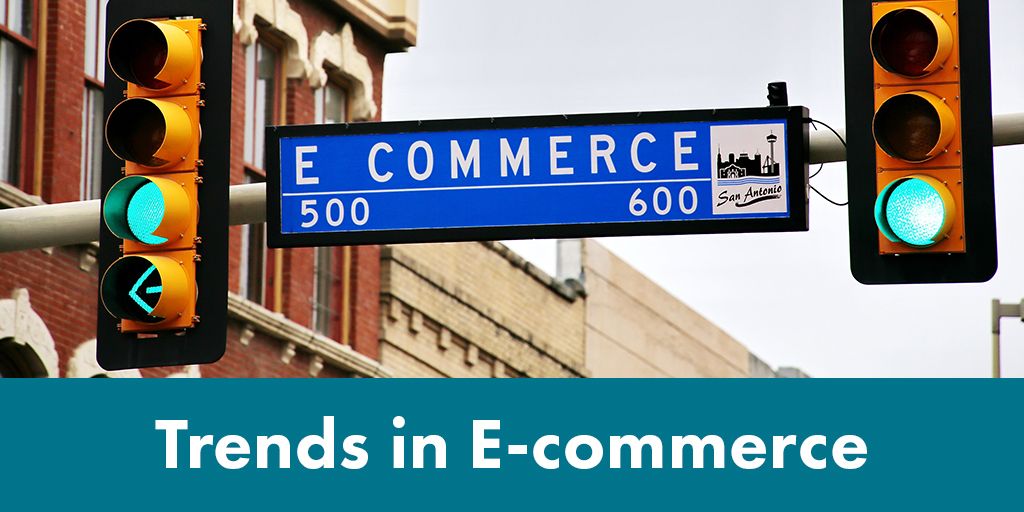
Trends in E-commerce
E-commerce, also referred to as electronic commerce or internet commerce, is the buying and selling of goods using the internet or other online services. From online shopping to payment encryption, these transactions make up a large percentage of businesses’ revenue and a growing preference for consumers. Understanding the trends can help companies predict consumer habits, increase efficiency, and grow their business.
Re-commerce

Vintage and second-hand stores have been around for decades but only recently have they established a major online-presence. Second-hand e-commerce stores, also known as re-commerces, are online stores for used products. Growth has mainly been due to the increase in sustainability awareness, growth in opportunities to purchase certain products for less money, and current fashion and industry trends.
PWA

The progressive web app (PWA) is a type of application software developed to work with any device, such as desktops and smartphones, that uses a browser like Chrome or Safari. What distinguishes it from other applications is that as the browser’s capabilities increase and develop so does the web application and thus the experience of the user. Important aspects of web apps that impact operations and users include installability, responsiveness, safety, linkability, offline usage, re-engabability, connectivity, and updatability.
Dynamic Pricing

Dynamic pricing is a pricing strategy using data to adapt pricing to the reality of the current market with the goal of reaching the optimal price at all times. Sometime referred to as surge pricing, demand pricing, or time-based pricing, it involves analyzing information such as competitors’ prices, market supply and demand, and the perception of the value of products to help businesses offer prices in real time, leading to higher sales and profit ratios.
Drone Delivery
 Online shopping has surged in the past several years with companies in different industries, such as fashion, technology, and food, enhancing online and delivery experiences. With the rise in demand, it is expected that they will start experimenting and implementing deliveries using drone technology. Drone deliveries could potentially offer faster delivery time, limited human contact and exposure, and lower costs – all major factors during a global pandemic.
Online shopping has surged in the past several years with companies in different industries, such as fashion, technology, and food, enhancing online and delivery experiences. With the rise in demand, it is expected that they will start experimenting and implementing deliveries using drone technology. Drone deliveries could potentially offer faster delivery time, limited human contact and exposure, and lower costs – all major factors during a global pandemic.
Direct to Consumer

The direct-to-consumer (D2C) model is a stark contrast of the classic retail model. Bypassing multiple levels of the traditional retail model puts the power in the hands of production companies and allows them more control over more aspects of their business, such as innovation, branding, and pricing. As the manufacturer or production company can sell goods and services through their own online stores, D2C shows strong support towards the spread of e-commerce and technology trends.
Smart Speakers

A growing number of people in the latest generations (Gen Z, Millenials, Gen X, and Boomers) routinely use virtual assistants for activities ranging from weather updates to scheduling appointments. Due to technological developments and the growing use of voice search marketing, e-commerce stores have the opportunity for users to buy directly from their stores.
Cloud Services

Cloud services generally refers to on-demand data centers and computer system resources available over the internet for companies and individual users. Though most recognize them for their data storage capabilities and computing power, they can provide users access to applications and tools without the need for direct active management or internal hardware. These cloud services act as a centralized platform for businesses to maintain and share insights and analytics on customers’ habits, trends, and predictions.
Online Marketplaces Over Search Engines

The search button is still a popular and necessary feature for products and service inquiries. However, rather than relying on search engines, such as Google and Safari, users have begun to search directly for products in online marketplaces like Amazon. According to Forrester, over 50% of purchases made online are from the world’s leading marketplaces: Amazon, Alibaba, JD.com and eBay with expectations of a gradual increase to 67% by 2022.
Source: Cyberclick’s “130 Trends and Predictions for Digital Marketing 2020.”
Wellness Through Innovation
It is our mission to provide a seamless customer experience through innovative collaborations, highest-quality products, and unparalleled service. Get started today with a free quote.
Wellness Through Innovation
It is our mission to provide a seamless customer experience through innovative collaborations, highest-quality products, and unparalleled service. Get started today with a free quote.
Wellness Through Innovation
It is our mission to provide a seamless customer experience through innovative collaborations, highest-quality products, and unparalleled service. Get started today with a free quote.
Let's Stay Connected
Contact
-
+1.661.775.2500
-
28903 Avenue Paine
Valencia, CA 91355 USA -
Main Headquarters Hours
Monday - Friday 8AM to 5PM -
Shipping & Receiving Warehouse Hours
Monday - Friday 8AM to 2:30PM
Disclaimer: The information provided by Lief Labs on our website is for general informational purposes only. The information on the website does not constitute legal or other professional advice. All information on Lief Labs’ website is provided in good faith, however we make no representation or warranty of any kind, express or implied, regarding the accuracy, adequacy, validity, reliability, or completeness of any information on our website and/or the links provided. Lief Labs and its parents, subsidiaries, owners, shareholders, and employees are not liable for any damages arising in contract, tort or otherwise from the use of any information on our website. Because your business has its own unique needs, you should consult with legal counsel experienced in FDA, FTC and regulatory matters.
© Copyright 2024 by Lief Organics. All Rights Reserved.

